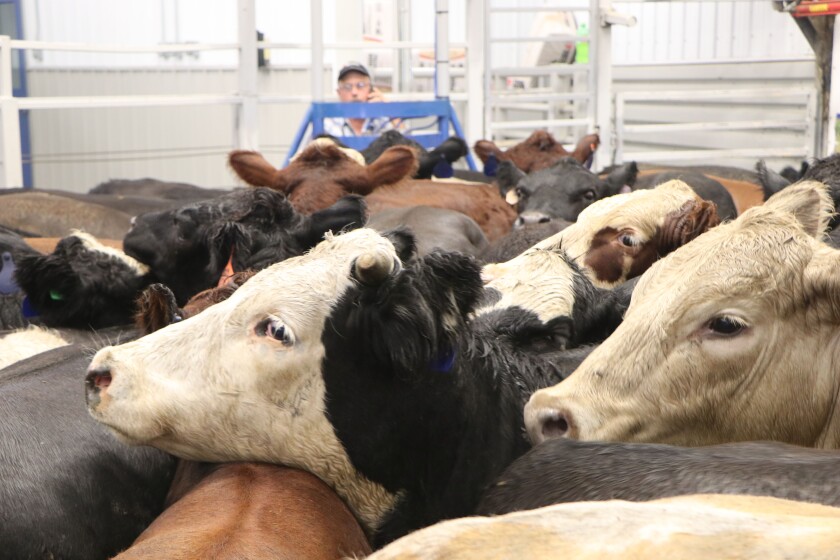Key Elements to Consider When Finding Livestock Danger Protection (LRP) Insurance Policy
When evaluating alternatives for Livestock Risk Security (LRP) insurance, numerous essential variables necessitate careful factor to consider to guarantee reliable danger management in the farming industry. Picking the best insurance coverage choices customized to your particular livestock procedure is critical, as is understanding exactly how superior prices correlate with the degree of security offered.
Protection Options
When thinking about Livestock Threat Protection (LRP) insurance policy, it is necessary to comprehend the various protection choices available to reduce threats in the agricultural sector. Livestock Risk Protection (LRP) insurance coverage offers different protection alternatives tailored to satisfy the diverse needs of livestock producers. Bagley Risk Management. One of the main protection choices is cost protection, which shields versus a decrease in market value. Producers can choose the coverage level that aligns with their price risk management objectives, permitting them to guard their procedures versus possible monetary losses.
One more important protection choice is the endorsement duration, which determines the length of time the coverage is in impact. Manufacturers can pick the recommendation duration that ideal matches their manufacturing cycle and market conditions. Furthermore, insurance coverage levels and rates vary based on the sort of animals being guaranteed, giving producers the flexibility to customize their insurance intends according to their specific requirements.
Understanding the various insurance coverage choices offered under Livestock Danger Protection (LRP) insurance is vital for manufacturers to make informed choices that properly protect their animals procedures from market uncertainties.
Costs Expenses

Animals Threat Security (LRP) insurance coverage offers vital protection options tailored to reduce dangers in the agricultural sector, with a significant aspect to consider being the calculation and structure of premium prices. These consist of the type and number of animals being guaranteed, the protection level chosen, the current market prices, historical price information, and the size of the insurance coverage period.
Insurance firms examine historical data on animals costs and manufacturing prices to identify an ideal premium that shows the degree of risk entailed. It is vital for animals producers to carefully evaluate premium costs and insurance coverage choices to guarantee they are effectively secured versus prospective economic losses due to unfavorable market conditions or unpredicted events.
Qualified Livestock
The resolution of eligible livestock for Animals Risk Defense (LRP) insurance policy coverage involves cautious consideration of particular criteria and characteristics. Animals types that are commonly qualified for LRP insurance include feeder cattle, fed lambs, swine, and livestock.
Feeder livestock, for example, are generally qualified for LRP coverage if they drop within specified weight arrays. Lambs are another classification of animals that can be considered for LRP insurance policy, with variables such as weight and age read this playing an essential role in establishing their qualification.
Prior to picking LRP insurance policy for animals, manufacturers ought to thoroughly assess the qualification standards described by the insurance coverage company to ensure their animals fulfill the required demands for coverage.
Plan Adaptability
Policy adaptability in Animals Threat Protection (LRP) insurance permits producers to tailor insurance coverage to suit their certain needs and run the risk of management strategies. This adaptability empowers livestock manufacturers to customize their insurance coverage policies based on factors such as the kind of animals they own, market conditions, and private risk find out this here tolerance levels. By using customizable choices, LRP insurance coverage makes it possible for manufacturers to effectively handle their danger direct exposure while guarding their livestock operations against unpredicted market volatility.
Cases Process
Upon experiencing a loss or damage, manufacturers can start the cases process for their Livestock Danger Defense (LRP) insurance coverage by without delay contacting their insurance coverage carrier. It is vital for manufacturers to report the loss asap to quicken the claims process. When getting to out to the insurance carrier, manufacturers will need to supply thorough details about the incident, including the day, nature of the loss, and any kind of relevant documents such as veterinary records or market prices.

After the assessment is complete, the insurance carrier will choose relating to the claim and communicate the outcome to the producer. If the insurance claim is authorized, the producer will get compensation according to the terms of their this contact form Animals Threat Protection (LRP) insurance policy. Bagley Risk Management. It is important for producers to be familiar with the claims process to guarantee a smooth experience in the event of a loss

Verdict
Finally, when picking Animals Threat Security (LRP) insurance policy, it is vital to consider insurance coverage choices, premium expenses, qualified livestock, policy adaptability, and the insurance claims procedure. These essential aspects will certainly help ensure that farmers and herdsmans are appropriately protected against prospective threats and losses linked with their livestock procedures. Making a notified decision based upon these considerations can ultimately result in better economic security and satisfaction for livestock producers.
Livestock Threat Defense (LRP) insurance uses different insurance coverage choices customized to fulfill the varied needs of livestock manufacturers.The resolution of eligible livestock for Livestock Danger Defense (LRP) insurance policy coverage entails careful consideration of details criteria and features.Plan flexibility in Livestock Risk Protection (LRP) insurance coverage allows producers to tailor protection to fit their particular requirements and risk management techniques.Upon experiencing a loss or damage, manufacturers can start the insurance claims process for their Animals Risk Defense (LRP) insurance policy by immediately contacting their insurance supplier.In verdict, when picking Animals Danger Security (LRP) insurance, it is important to take into consideration protection choices, premium prices, eligible animals, policy adaptability, and the cases procedure.